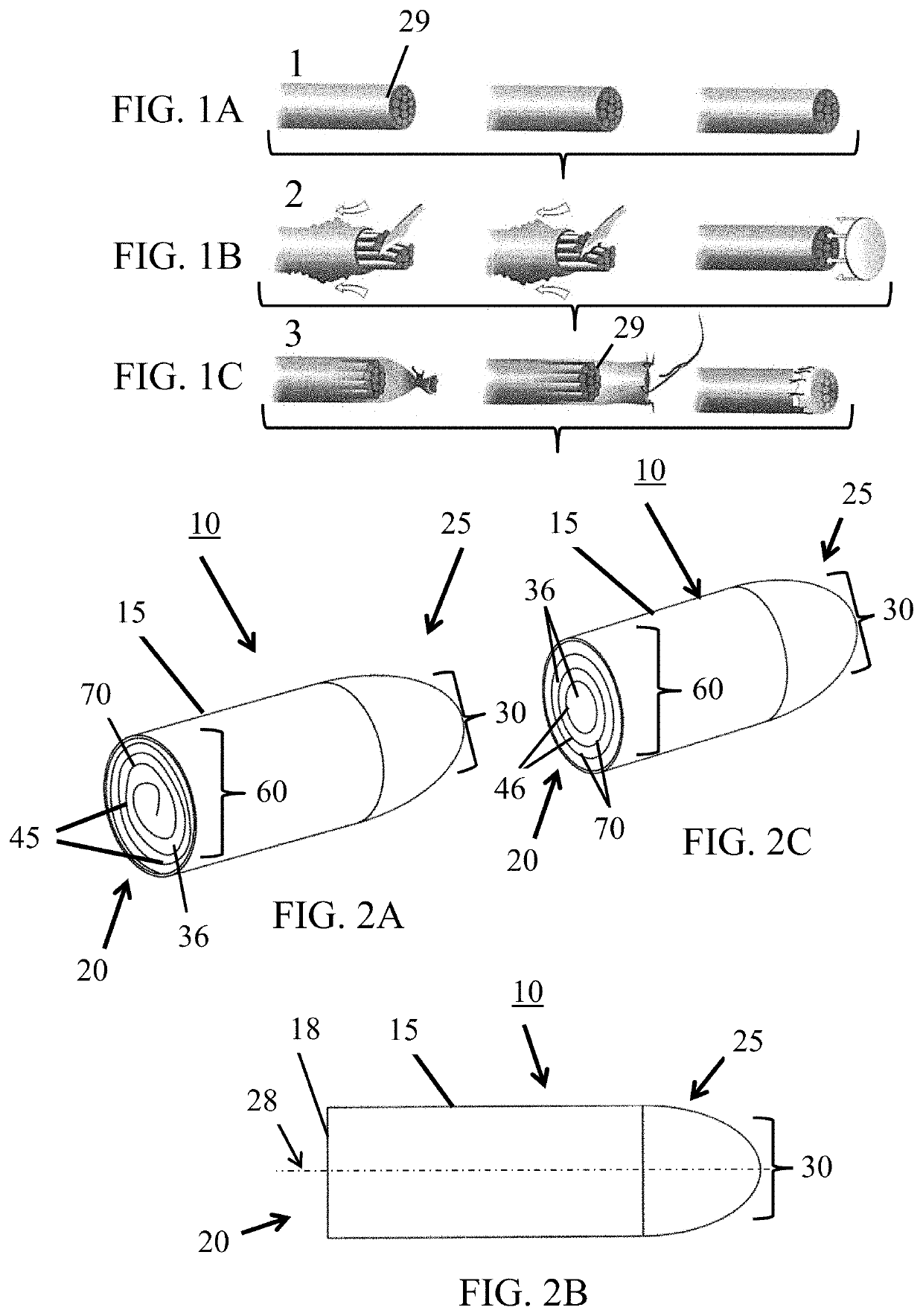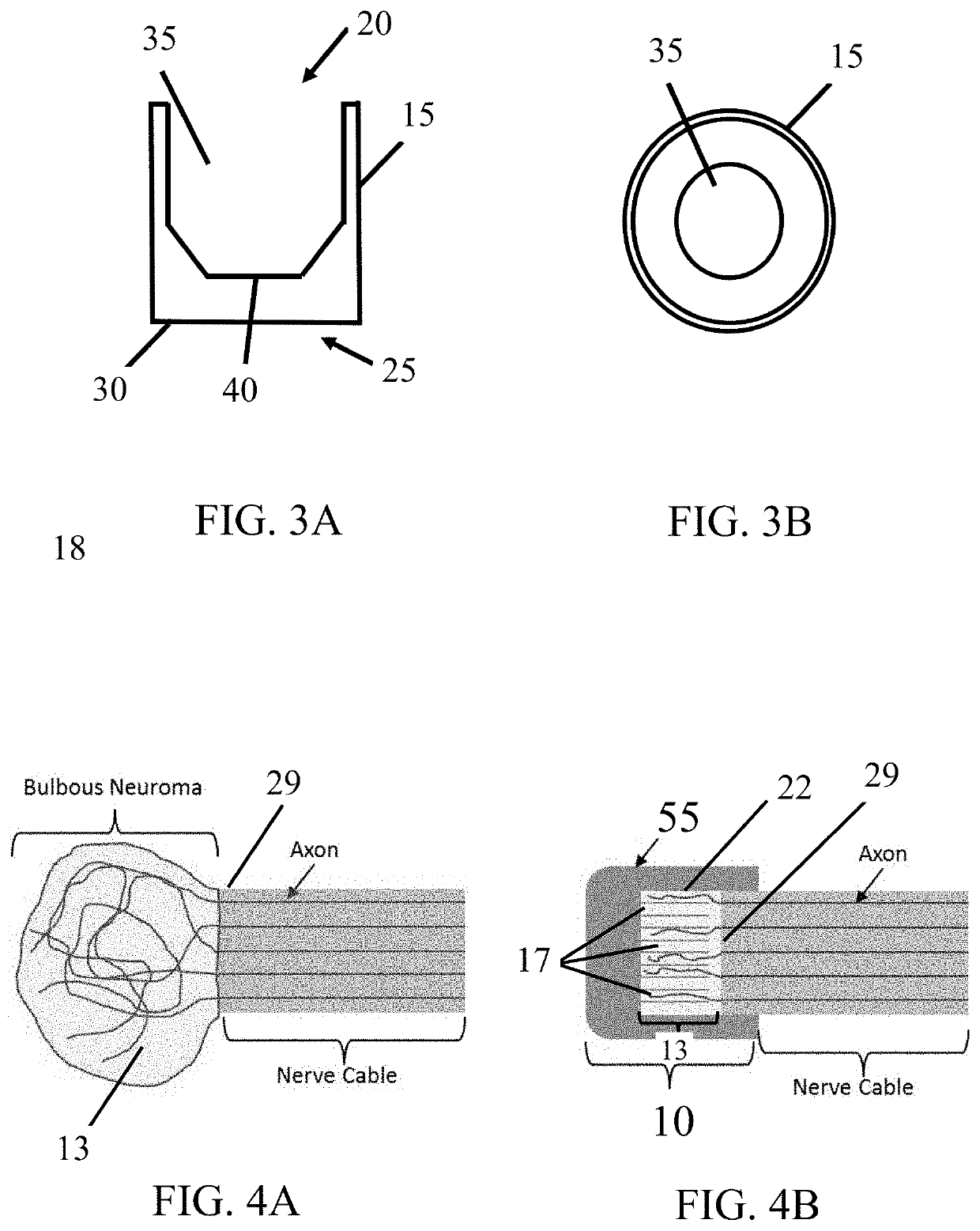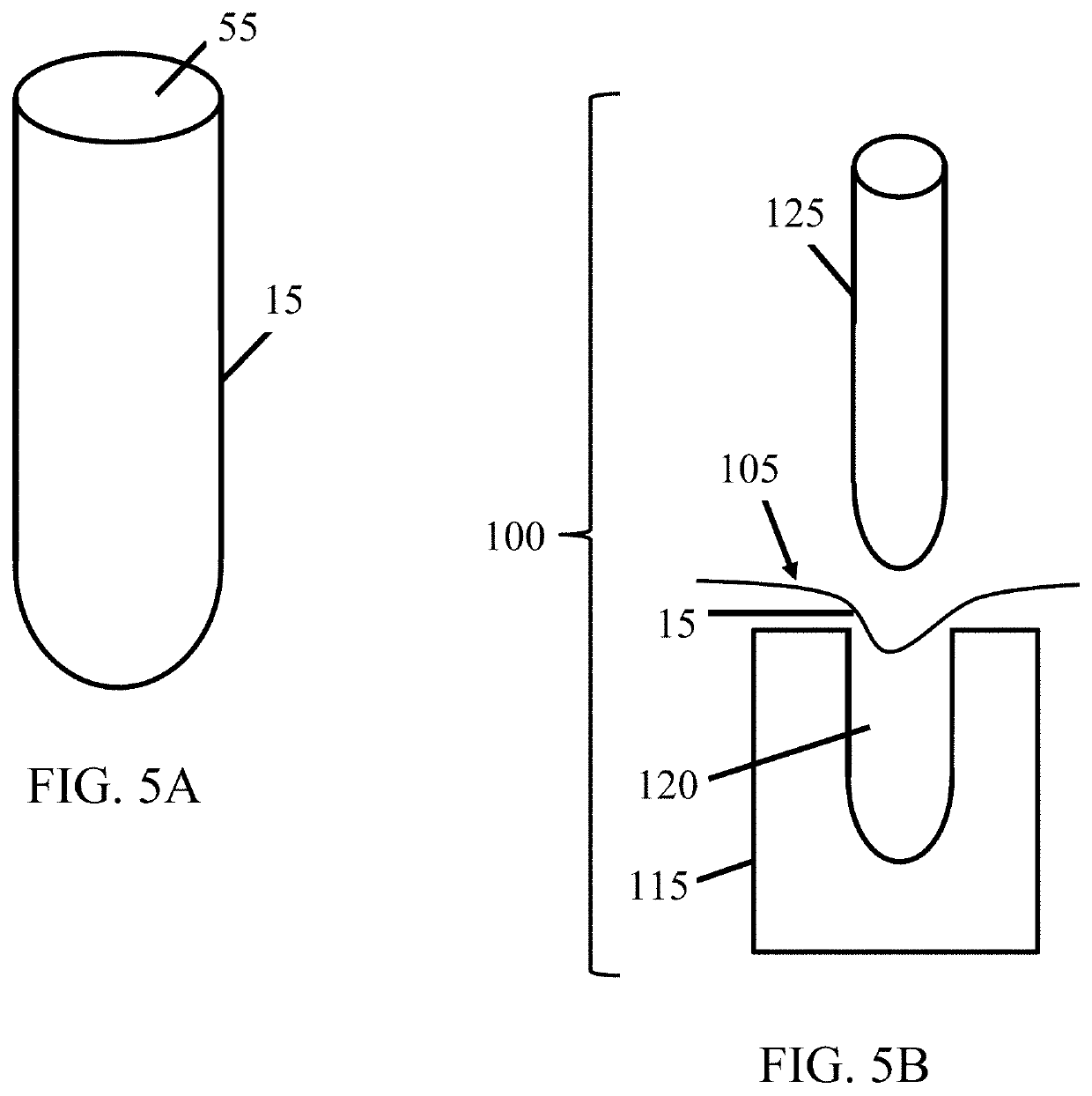Materials and methods for protecting against neuromas
a neuroma and material technology, applied in the field of materials and methods for protecting against neuroma, can solve the problems of affecting the treatment effect, so as to facilitate the insertion of the terminal nerve end, facilitate the insertion, and facilitate the treatment
- Summary
- Abstract
- Description
- Claims
- Application Information
AI Technical Summary
Benefits of technology
Problems solved by technology
Method used
Image
Examples
Embodiment Construction
[0030]The subject invention provides devices and methods for alleviating discomfort associated with neuromas. More specifically, the subject invention pertains to devices and methods for limiting neuroma size and physically surrounding the neuroma to inhibit stimulation that elicits neuropathic pain. In certain embodiments, the subject invention is directed to a tissue-engineered scaffold that provides: a barrier that limits the size of a neuroma, dividers that subdivide the neuroma volume or mass into smaller, disconnected neuromas masses to reduce axonal cross-talk or the “cascade effect,” and mechanical isolation of the neuroma to inhibit stimulation.
[0031]A device of the subject invention is designed to form a protective, connective tissue covering or cap surrounding the terminal nerve end 29, thereby surrounding any resulting neuroma formation. Within the volume created by the barrier, sub-dividing the neuroma volume as it forms can limit the amount of interaction between axons...
PUM
| Property | Measurement | Unit |
|---|---|---|
| length | aaaaa | aaaaa |
| length | aaaaa | aaaaa |
| length | aaaaa | aaaaa |
Abstract
Description
Claims
Application Information
 Login to View More
Login to View More - R&D
- Intellectual Property
- Life Sciences
- Materials
- Tech Scout
- Unparalleled Data Quality
- Higher Quality Content
- 60% Fewer Hallucinations
Browse by: Latest US Patents, China's latest patents, Technical Efficacy Thesaurus, Application Domain, Technology Topic, Popular Technical Reports.
© 2025 PatSnap. All rights reserved.Legal|Privacy policy|Modern Slavery Act Transparency Statement|Sitemap|About US| Contact US: help@patsnap.com



